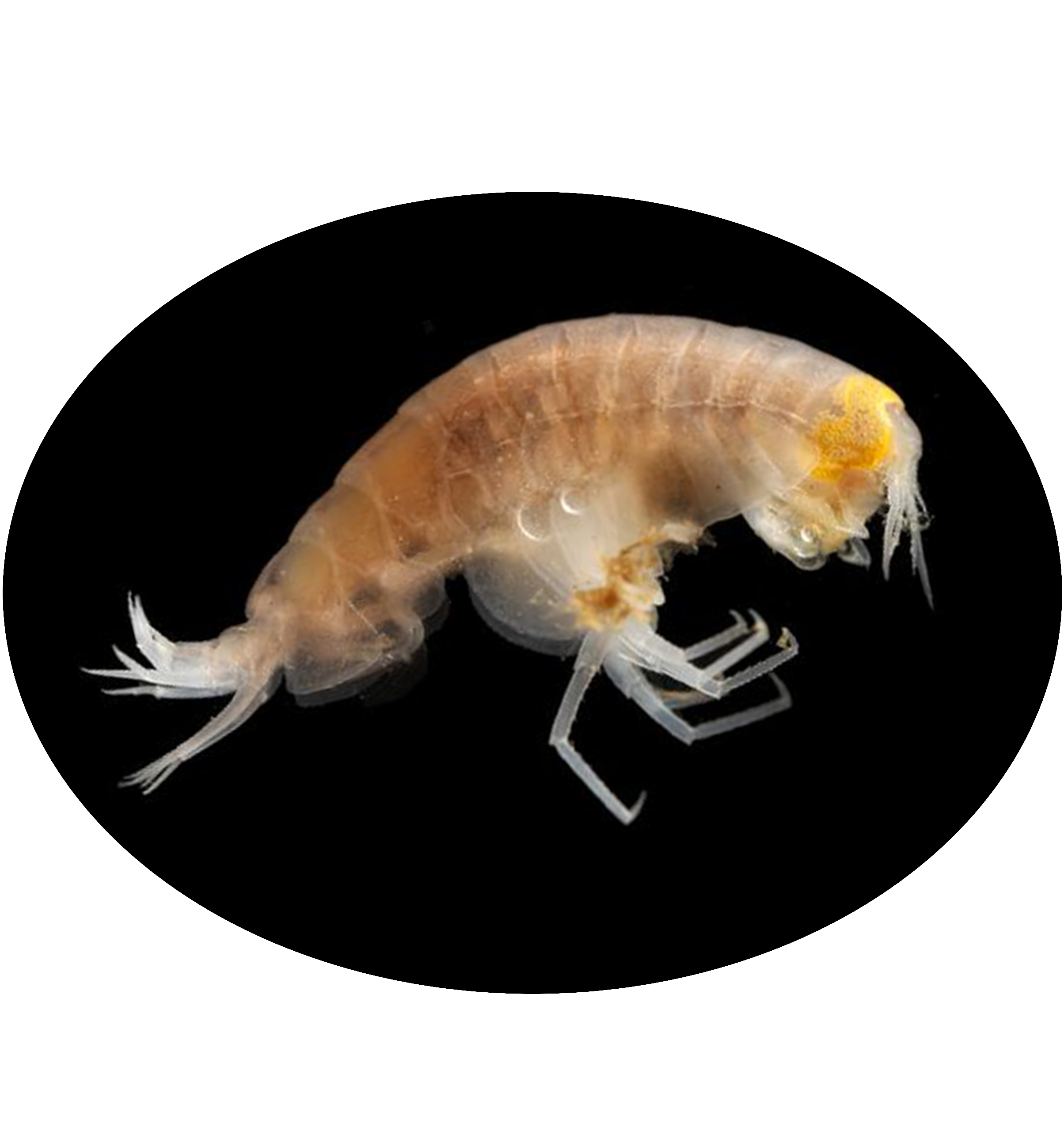
Hirondellea gigas is a species of amphipod crustacean found in the hadal zone of the Pacific Ocean, particularly in the Mariana Trench. It is adapted to extreme deep-sea environments, living at depths exceeding 10,000 meters where pressures are immense and temperatures are near freezing. This species feeds on organic matter that sinks to the ocean floor, playing a crucial role in the deep-sea ecosystem as a scavenger. Its unique adaptations, such as a lightweight exoskeleton and specialized enzymes, allow it to survive and thrive in one of the most extreme habitats on Earth.
Animalia (Kingdom); Arthropoda (Phylum); Crustacea (Subphylum); Multicrustacea (Superclass); Malacostraca (Class); Eumalacostraca (Subclass); Peracarida (Superorder); Amphipoda (Order); Amphilochidea (Suborder); Lysianassida (Infraorder); Lysianassidira (Parvorder); Lysianassoidea (Superfamily); Hirondelleidae (Family); Hirondellea (Genus); Hirondellea gigas (Species)
Tetronychia gigas Birstein & M. Vinogradov, 1955
Philippine Trench from Philippine Sea, Mariana Trench from North Pacific Ocean and Kuril-Kamchatka Trench
| Species | Phylum | Common Name | Ecosystem | Depth | Habitat | NCBI Taxonomy ID |
|---|---|---|---|---|---|---|
| Hirondellea gigas | Arthropoda | - | Deep sea | 6,800-11,000 | Mariana Trench in the northwestern Pacific Ocean | 1518452 |
| Genome Assembly | Genome Size | Assembly level | Released year | WGS accession | Submitter | BioProject | BUSCO completeness (%) | Scaffold/Contig N50 (kb) | GC content (%) | Repeat Rate (%) | Gene Number |
|---|---|---|---|---|---|---|---|---|---|---|---|
| - | 13.92Gb | Chromosome | 2025 | CNA0142381 | - | CNP0005374 | 89.34 | 458,700/466.1 | 38.8 | 72.75 | 27,881 |
| Title | Journal | Pubmed ID |
|---|---|---|
| The amphipod genome reveals population dynamics and adaptations to hadal environment | Cell | 40054448 |
| Gene ID | Description |
|---|---|
| Hgig_17097 | ANKYRIN REPEAT-CONTAINING |
| Hgig_17098 | |
| Hgig_17099 | |
| Hgig_17100 | |
| Hgig_17101 | |
| Hgig_17102 | ZINC FINGER BED DOMAIN-CONTAINING PROTEIN 4 |
| Hgig_17103 | |
| Hgig_17104 | |
| Hgig_17105 | |
| Hgig_17106 | |
| Hgig_17107 | |
| Hgig_17108 | |
| Hgig_17109 | |
| Hgig_17110 | |
| Hgig_17111 | |
| Hgig_17112 | |
| Hgig_17113 | |
| Hgig_17114 | |
| Hgig_17115 | SPLICING FACTOR YJU2 |
| Hgig_17116 | |
| Hgig_17117 | TETHER CONTAINING UBX DOMAIN FOR GLUT4 |
| Hgig_17118 | AUTOPHAGY PROTEIN 5 |
| Hgig_17119 | |
| Hgig_17120 | |
| Hgig_17121 | |
| Hgig_17122 | TYROSINE-PROTEIN KINASE RECEPTOR |
| Hgig_17123 | |
| Hgig_17124 | |
| Hgig_17125 | |
| Hgig_17126 | |
| Hgig_17127 | |
| Hgig_17128 | |
| Hgig_17129 | IONOTROPIC RECEPTOR 20A-RELATED |
| Hgig_17130 | |
| Hgig_17131 | - |
| Hgig_17132 | |
| Hgig_17133 | TRANSPOSON |
| Hgig_17134 | - |
| Hgig_17135 | SOLUTE CARRIER FAMILY 12, CATION COTRANSPORTERS |
| Hgig_17136 | SOLUTE CARRIER FAMILY 12, CATION COTRANSPORTERS |
| Hgig_17137 | BEAT PROTEIN |
| Hgig_17138 | BEAT PROTEIN |
| Hgig_17139 | |
| Hgig_17140 | HEAT SHOCK PROTEIN HSP-12.2-RELATED |
| Hgig_17141 | HEAT SHOCK PROTEIN HSP-12.2-RELATED |
| Hgig_17142 | IONOTROPIC RECEPTOR 20A-RELATED |
| Hgig_17143 | HISTONE H3 |
| Hgig_17144 | |
| Hgig_17145 | HISTONE H3 |
| Hgig_17146 | HISTONE H3 |

